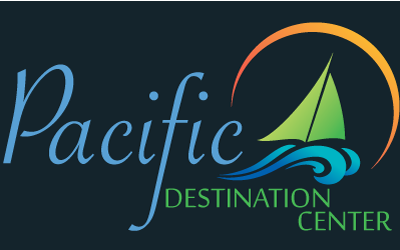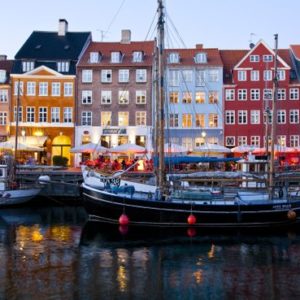Denmark is a Scandinavian country comprising the Jutland Peninsula and numerous islands. It’s linked to nearby Sweden via the Öresund bridge. Copenhagen, its capital, is home to royal palaces and colorful Nyhavn harbor, plus the Tivoli amusement park and the iconic “Little Mermaid” statue. Odense is writer Hans Christian Andersen’s hometown, with a medieval core of cobbled streets and half-timbered houses.
- When To Go
- Copenhagen
- North Jutland
- West Jutland
- East Jutland
- South Jutland
- Fyn
- West Zealand
- North Zealand
- South Zealand
- Bornholm
Summer
May through September, the days are still long and the weather usually pleasant. You’ll find everyone outside soaking up the sunny summer vibes. July and August are the peak months in Denmark.
Winter
Winter is “hygge season.” We break out the hot cocoa, candles, and blankets. It’s a great time to experience the Danish Christmas season or explore museums, restaurants, and holiday markets.
Spring
Spring in Denmark is a great time to visit. The weather is usually comfortable and is a popular shoulder season. While it can be rainy, Spring often sees less rain than Autumn, making it an ideal shoulder season for savvy tourists.
Autumn
Autumn in Denmark, the weather can be cooler and less predictable (though you can count on some rain), but the lines to popular attractions are shorter and you can still explore the country on foot or by bike as temperatures remain relatively suitable.
Come and be charmed by Copenhagen, Northern Europe’s coziest capital, packed with cafés, shops, and the best restaurants in Scandinavia. From the winding streets of the beautiful old town and grand royal palaces to the city’s cutting-edge buildings and attractions, Copenhagen is the perfect blend of old world and new. Hop on a bike or stroll the city on foot and take in its laid-back atmosphere and effortless sense of style.
The Wadden Sea
West Jutland is also home to the UNESCO World Heritage site the Wadden Sea National Park. This intertidal marshland stretches from Holland through Germany and up the west coast of Jutland. It is known for its great birdlife and beautiful scenery.
Windswept West
Set off into the rugged dunes and endless wild beaches of Denmark’s West Coast. You can drive your car, bike or ride horseback, as you soak up the sights across the whole area.
A diverse region
Family holidays at LEGOLAND or amongst Viking ruins; romantic walks along the beach or boating on a fjord; the buzz of Denmark’s vibrant second city, Aarhus… East Jutland really does offer you everything!
Denmark’s historic borderland
South Jutland has always had a strategically important location and has developed a fascinating history as a result. It’s also lined with dramatic coast and full of historical and cultural sights – well worth a visit!
Fyn (also known as Funen) is Denmark’s second largest island, situated between the island of Zealand and mainland Denmark. You can instantly see why it is called Denmark’s garden island, with its gently rolling hills, orchards, hedgerows and thatched, half-timbered farmhouses. The main city of Odense is Denmark’s third-largest city and is the birthplace of Hans Christian Andersen, one of Denmark’s best-loved authors, while the Funen countryside hosts countless farms, historical sites like Egeskov Castle, and the scenic South Fyn Archipelago. If you’re planning a holiday to Denmark, Fyn is a great place to see something new.
West Zealand is a part of Denmark steeped in history. From the stone age through the Viking era, medieval times and the present, West Zealand has played an important role in Danish history. The region is home to the impressive cathedral city Roskilde, dating back to Viking times. West Zealand has plenty of Viking attractions to look at, including Viking ships and Viking fortresses. The region is scattered with small market towns and quiet harbours, and the nature consists of beautiful fjords, beaches, cliffs, rolling hills and islands.
Come to West Zealand and re-live a thousand years of history!
Land of the Vikings
See an impressive Viking legacy, as displayed at the Viking Ship Museum on Roskilde Fjord. At other places in the region, you can visit the collections of great artists inspired by the area and walk through history at Viking ring fortresses.
Looking for day trips from Copenhagen? Then head to the Danish Riviera. You’ll see why North Zealand is a popular Danish holiday destination. It’s full of things to do near Copenhagen, beautiful nature and pristine Danish beaches. Drive north along the coast road and stop off at picturesque seaside towns and fishing villages. Or head inland to walk in forests, including the UNESCO World Heritage Site of King Christian V’s royal hunting grounds. North Zealand is an ancient playground of royalty, full of famous castles like Frederiksborg Castle and Kronborg Castle, home of Shakespeare’s Hamlet.
The Iconic Castles of North Zealand
Immerse yourself in royal history at the famous castles and royal parks close to Copenhagen.
Denmark’s easternmost island in the Baltic sea, Bornholm is a sight to behold. The island receives many hours of sunshine and its extraordinary light has a long history of attracting artists. This slow-paced, friendly place is the only place in Denmark where you can walk craggy, granite coastline. Known for pure, white beaches, you can enjoy a unique island culture of round churches, regional delicacies, and quaint fishing villages, all among postcard-perfect scenery.
Video courtesy of Visit Denmark Tourism
Showing the single result
Need Assistance?
800-227-5317 | sales@pacific-destinations.com
Tell us where and when you want to go and we’ll give your request our immediate attention! No high pressure sales, just straight talk and sound advice!

